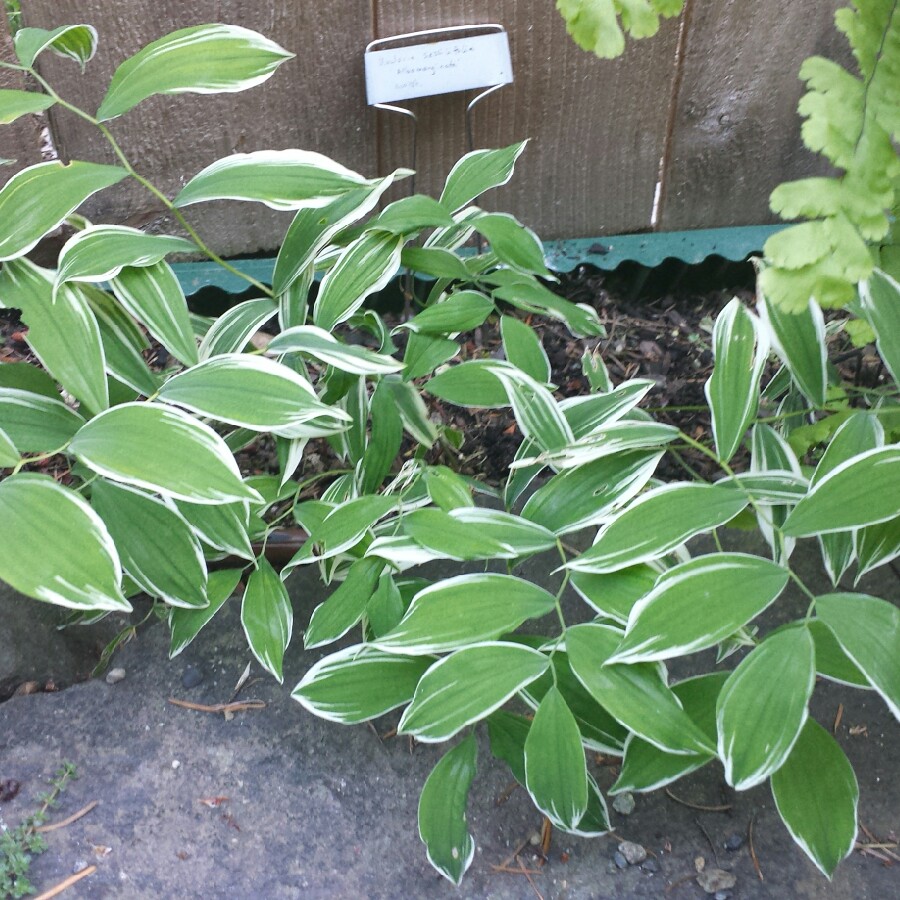
Uvularia sessilifolia 'Albomarginata'
Large-flowered Bellwort
Uvularia grandiflora has arching stems with green, lanceolate leaves, and, in Spring, terminal clusters of pendent slender bell-shaped yellow flowers with twisted petals. 'Albomarginata'. has variegated cream and green leaves, and creamy-coloured flowers
Contributed by @cathyh
-
Full sun to partial shade
-
Occasional watering
-
Full Frost Hardy: 5F (-15°C)
-
Moist and fertile
Common name
Large-flowered Bellwort
Latin name
Uvularia sessilifolia 'Albomarginata'
type
rhizomatous herbaceous perennials
family
Colchicaceae
ph
5.5 - 7.5 Acid - Neutral
Plant & bloom calendar
-
Best time to plant
-
When the plant will bloom
full grown dimensions
 0.30 M
0.75 M
0.30 M
0.75 M
Uvularia sessilifolia 'Albomarginata'
Uvularia grandiflora has arching stems with green, lanceolate leaves, and, in Spring, terminal clusters of pendent slender bell-shaped yellow flowers with twisted petals. 'Albomarginata'. has variegated cream and green leaves, and creamy-coloured flowers
Flowering Season
From Mid Spring TO Late Spring
Uvularia flowers from mid to late Spring
Planting Season
From Late Summer TO Early Autumn
Plant in late Summer or early Autumn in humus rich soil in part shade, and keep the soil moist
Propagation by Division
From Late Spring TO Early Summer
When the plant has finished flowering, using a fork dig up plant, trying to keep the root ball as complete as possible. Split the root ball at the centre with a sharp knife or a spade, or by placing two garden forks back-to-back into the middle of the root ball, and pushing the fork handles apart.to lever the root ball apart. Replant the new clumps to the same depth as the original, and water well. Keep well watered until established.
Propagation by Seed
From Early Spring TO Mid Spring
Fill a seed tray with seed compost,water and allow to drain.Sprinkle seeds over the surface allowing roughly 25mm space between seeds and cover with a thin layer of compost. Put tray in a clear polythene bag and place on a windowsill. When seedlings show remove plastic bag.When the second pair of leaves appear on the seedlings thin out to 50mm spacing by removing the weakest looking plants. After 2 or 3 weeks and when danger of frost has passed plants can then be planted outside into required position.









